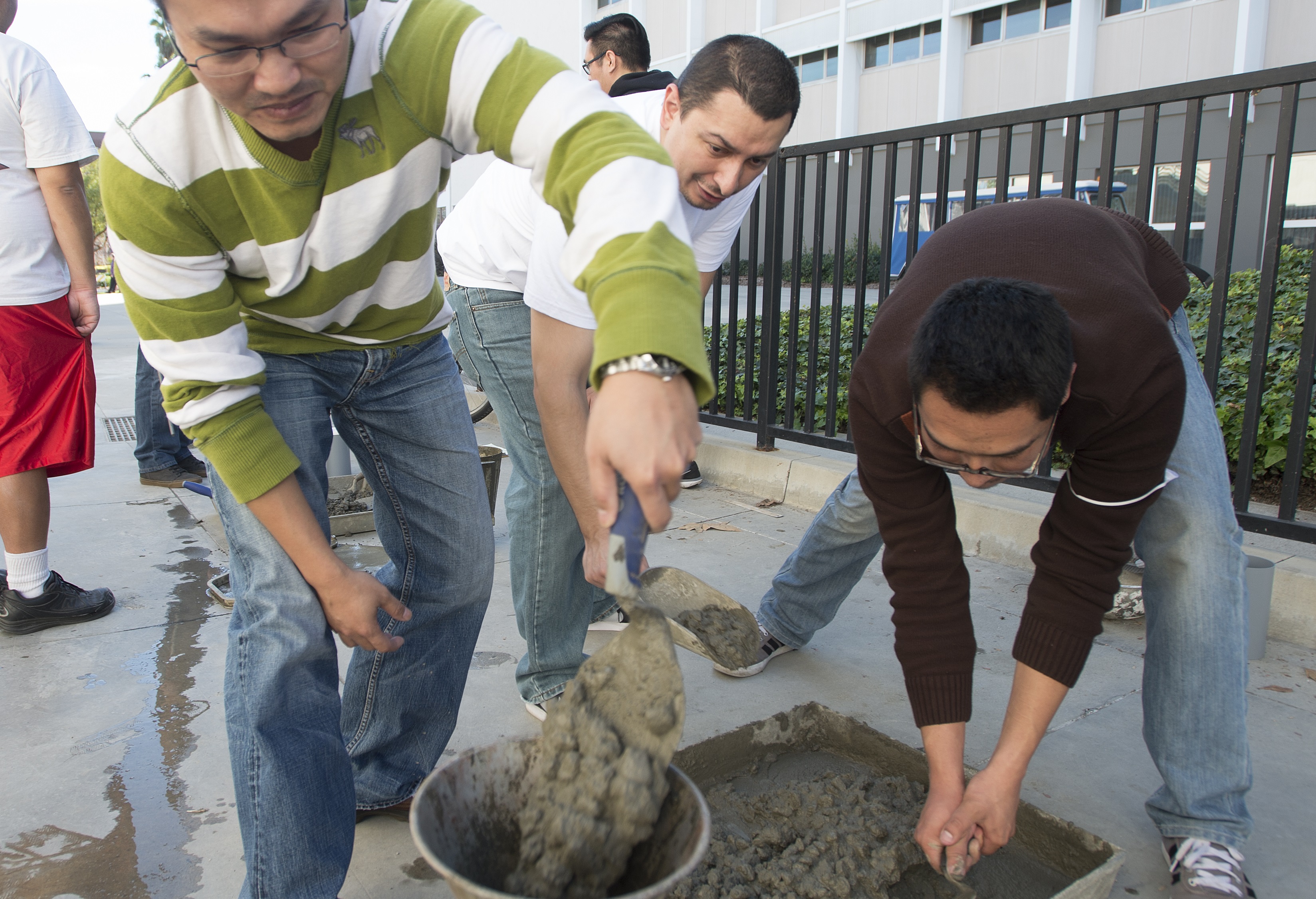Construction Engineering and Management Program
Cal Poly Pomona's Bachelor of Science in construction engineering technology program has produced over 1,000 graduates since its inception in 1971. In fall 2018, the name of the construction engineering technology program changed to construction engineering and management. The construction engineering and management program provides the student with a firm background in construction practices. Graduates may eventually work in any area of construction including commercial, heavy-civil, and residential. Construction engineering and management graduates work with owners, developers, architects, engineers (civil, mechanical, and electrical), building departments, governmental agencies, contractors, and subcontractors to implement a variety of construction projects. Job titles include field engineer, project engineer, superintendent, as well as estimator, scheduler, and project manager.
Students in the construction engineering and management program receive training in construction materials, drafting, computer applications, construction surveying, structural design, soil mechanics, construction equipment, estimating, scheduling, accounting, project management, safety, and law.
Program Educational Objectives and Student Outcomes
Program Educational Objectives
Construction Engineering and Management graduates are expected to attain the following program educational objectives (PEOs) within a period of 3-5 years after graduation. Our graduates will be professionals who:
- Develop a career as an engineer, surveyor, and/or manager in the civil engineering, construction, or engineering related fields.
- Maintain and promote professional competency, via professional licensure and life-long learning through continuing education, graduate studies, and participation in professional societies.
- Practice the profession of engineering, taking into consideration the ethical, political, economical, legal, environmental, and societal impacts of their decisions.
Students Learning Outcomes
The student outcomes (SO) are based on both the ABET Engineering Accreditation Commission (EAC) and Applied and Natural Science Accreditation Commission (ANSAC) outcomes as shown below:
Mapping of Program adopted EAC and ANSAC Student Outcomes
|
EAC adopted SO |
ANSAC respective SO |
|
SO1. an ability to identify, formulate, and solve complex engineering problems by applying principles of engineering, science, and mathematics |
SO1. An ability to identify, formulate, and solve broadly defined technical or scientific problems by applying knowledge of mathematics and science and/or technical topics to areas relevant to the discipline. |
|
SO2. an ability to apply engineering design to produce solutions that meet specified needs with consideration of public health, safety, and welfare, as well as global, cultural, social, environmental, and economic factors |
SO2. An ability to formulate or design a system, process, procedure or program to meet desired needs. |
|
SO6. an ability to develop and conduct appropriate experimentation, analyze and interpret data, and use engineering judgment to draw conclusions |
SO3. An ability to develop and conduct experiments or test hypotheses, analyze and interpret data and use scientific judgment to draw conclusions. |
|
SO3. an ability to communicate effectively with a range of audiences |
SO4. An ability to communicate effectively with a range of audiences. |
|
SO4. an ability to recognize ethical and professional responsibilities in engineering situations and make informed judgments, which must consider the impact of engineering solutions in global, economic, environmental, and societal contexts |
SO5. An ability to understand ethical and professional responsibilities and the impact of technical and/or scientific solutions in global, economic, environmental, and societal contexts. |
|
SO5. an ability to function effectively on a team whose members together provide leadership, create a collaborative and inclusive environment, establish goals, plan tasks, and meet objectives |
SO6. An ability to function effectively on teams that establish goals, plan tasks, meet deadlines, and analyze risk and uncertainty. |
|
SO7. An ability to acquire and apply new knowledge as needed, using appropriate learning |
|
Meaning Quality Integrity Statement
WASC IEEI Input Form for 2015 Interim Report
Curriculum
The construction engineering and management program curriculum (124 semester units) is designed to give the student both an understanding of the fundamental principles of engineering as applied science and the practical expertise to apply these principles to actual situations. In keeping with professional expectations, the Construction Engineering and Management program incorporates these curricular areas into the educational experience: mathematics and basic sciences; engineering sciences and engineering design; and humanities and social sciences. Specific curricular requirements can be found on the curricula webpage.
Applying for Admission
Applicants to the program should select the appropriate option when submitting their application through CSU Apply. Current students may declare or change their option by submitting a general academic petition.
Reasons to Choose Cal Poly Pomona
- High rankings
- Practical "learn-by doing" philosophy of education
- Small class sizes
- All classes taught by professors
- Fully accredited
- Largest undergraduate civil engineering program in the country
- Extracurricular activities
- Beautiful campus
- Modern facilities
- Suburban location provides many internship opportunities
- Graduates are in demand
